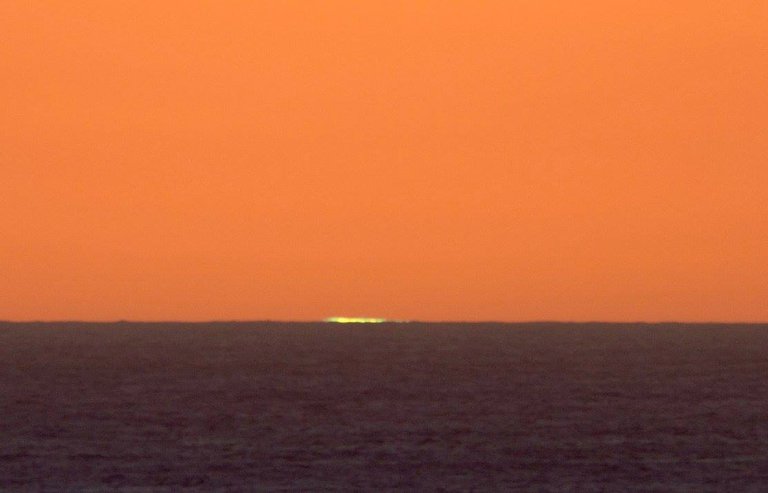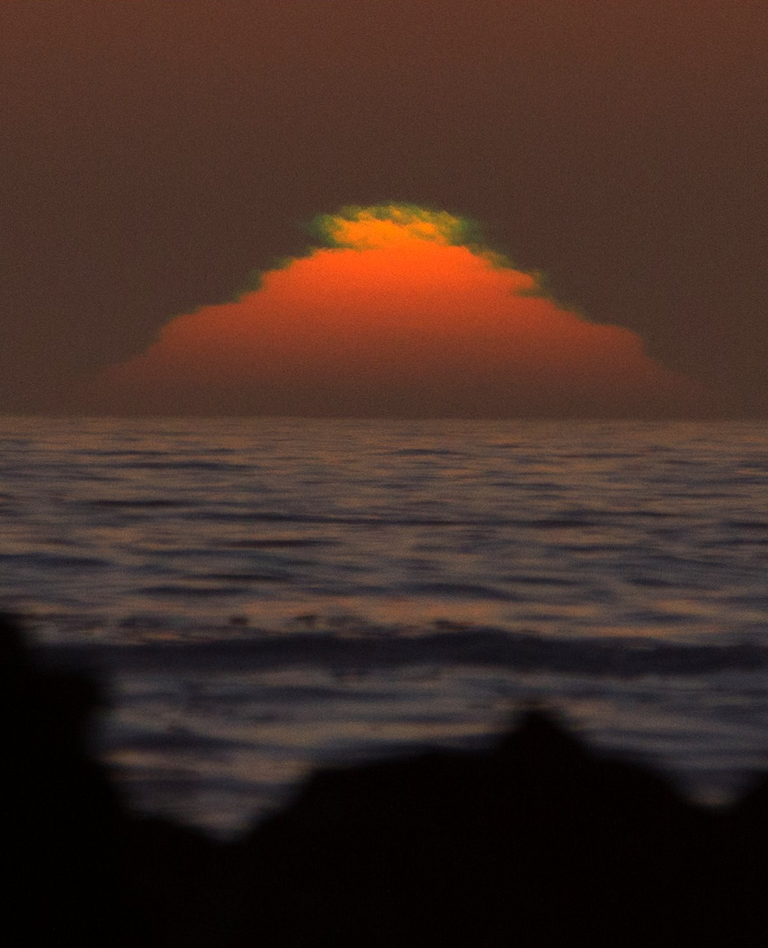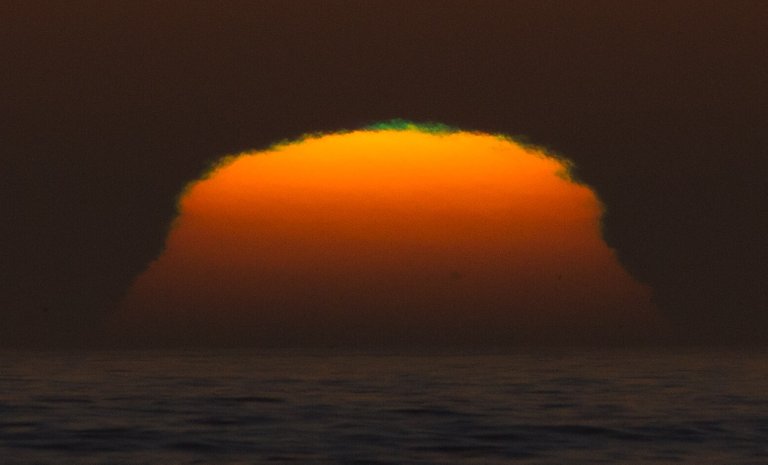Legend has it that just as the sun sets, if the conditions are perfect, then you will see a brilliant flash of green. Such phenomena have been talked about by sailors and travelers for centuries. With the digital age, these legends can be explored, and shown to the rest of the world.
In fact, it turns out that there is both truth and fiction in this particular legend. It is true that the green flash is real. It is however false that a) it is a very rare phenomenon and b) that it is a brilliant flash.
In fact, the effect is small, but it is beautiful. The reason for the effect is as follows.
As light passes through air of different densities (such as we have in the atmosphere of the Earth, going from high density near the surface, to low density the closer you get to space), the light bends. In fact, this effect is called refraction and is the cause, in part, for the familiar rainbow. In fact, not only does light bend, but light of different wavelengths (ie. colours) bends by different amounts. Red light bends a lot, and blue light bends less. The physics of this is relatively simple, but we won't go into it here.
So, as you look at an image of the sun, you will find that the red light from the sun will be bent more than the blue light. In fact, most of the blue light that is coming from the sun is scattered in the air, and most of it doesn't reach us directly. This is the reason that the sky itself is blue. This means that because we've lost most of the blue light, we will talk instead about green light, which is also refracted less than the red light.
What this means is that there are essentially two (or indeed a continuum) of images of the sun, with a red version lower down, and a green version higher up. The amount that they differ is actually tiny, so they overlap almost completely, with just a tiny red rim at the bottom and a tiny green rim at the top.
Most of the time, this green rim is invisible, because the other colours are so much brighter and it is thus impossible to see it. However, there are times when we get, for a fraction of a second, a view of this green version of the sun...or at least a tiny part of it.
Just as the sun is setting, if we are lucky, and the conditions are just right, once the red image of the sun has departed below the horizon, what we are left with is the tiniest image of the very top of the green image of the sun. This, brief, fleeting image, is the green flash.
Here is an image of the green flash that I took, over the ocean at sunset, not far from Cape Town.

But this is subtle, and not that impressive, right?
Well, the green flash can definitely look better than this, particularly when there is a temperature inversion over the ocean. This occurs when the air temperature from the ocean's surface, going upwards gets colder and colder, then warmer in an intermediate layer, then colder and colder again. This warm layer in the middle can act as a sort of magnifying glass in the sky, and can take the image of the sun as it is setting, and as the green light passes through that warm layer, it magnifies it.
Here is a photo of precisely this effect which I took last week sat on top of Signal Hill in Cape Town. It is called a Mock Mirage Green Flash:

You see the rim of green at the top, shimmering above the orange image.
Here are a couple more I took of the same thing:


So, when can you see such effects? Essentially, you want to be looking for situations where the horizon is a long way off. The ocean is generally the best place, and to be almost level with the ocean is ideal. Look for days where there is a tiny bit of a shimmer, but minimal cloud cover at the horizon. If there is cloud cover, then you will have to look for the moment that the sun is about to disappear behind the clouds.
When I am photographing the green flash, I like to stop down my camera a stop or two, so that it isn't saturated by the bright part of the sun. I shoot on manual mode, and use a Sigma 100-600mm lens at 600mm. I set it up to focus on infinity and then take it onto manual focus. I only point it towards the sun at the last minute, because you have to be very very careful. I usually use ISO 200 or so and make sure that the speed is less than 1/500 or so of a second to insure that I can get a stable image with such a long zoom. Patience is key...and taking lots of photos to capture that one moment of green flash.
Note, I am not saying that you should take direct photographs of the sun without adequate safety precautions, as this can be very dangerous to your eyes, or to the camera.
Anyway, this is my first post, so let me know what you think, and I will continue to describe phenomena of atmospheric optics over the coming posts.